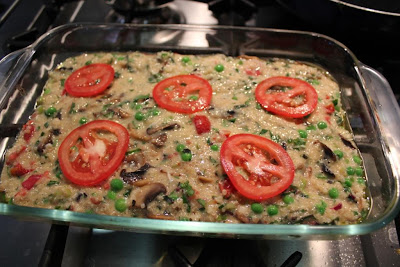 |
| my latest attempt |
I used a recipe from the cookbook called 'Gluten Free Baker' and my first attempt was pretty ordinary (see picture below). Although they tasted good, they didn't really rise at all. I've just eaten the results of attempt number two (see picture above) and they are a slight improvement, but there is certainly a way to go yet. Unfortunately the recipe is not dairy free. I figured I should try and master it without gluten but with dairy before I tried to tackle leaving both out. I used Bob's Red Mill all purpose gluten free flour as it's the one the cookbook recommended and also because I resist using those horrible starchy pre-maid flours. This one was a mix of some starch but also with some sorghum and bean flours. I think you could also use a blend that I often use which is one third quinoa flour, one third sorghum flour and one third tapioca starch, but I haven't tried it yet.
 |
| my first attempt |
Consider this recipe a work in progress and if I have more luck in the future I will update with the results.
What you will need:
- 2 1/2 cups of all purpose gluten free flour
- 4 tsp baking powder
- 1 1/4 cups ground almonds
- 115 grams butter
- 1/3 cup caster sugar
- 3/4 - 1 cup of buttermilk
- 1 tsp vanilla extract (optional)
- 1 tsp chia seed gel (optional, see notes below for directions)
What you need to do:
1. Pre-heat oven to 190 degrees celsius
2. Mix the flour, baking powder and almonds in a mixing bowl.
3. Rub in the butter with finger tips until the mixture resembles fine breadcrumbs. The idea is to get as much air into the flour as possible.
4. Add the sugar and mix through lightly.
5. Add the milk, vanilla essence and chia seed gel. Mix to form a dough and knead lightly.
6. On a floured surface, roll out the dough to 2.5 - 3 cm thick and then use a cutter or knife to cut out rounds. Place on a greased baking tray
7. Cook for 15 - 20 minutes until they are golden brown and sound hollow when tapped.
Notes:
I think the butter could be slightly reduced as the end result was a fairly 'short' scone, as in crumbly.
The original recipe used a gum but I substituted this for chia seed gel. To prepare add one teaspoon of chia seeds to 9 teaspoons of water. Whisk and leave to stand for 15 minutes then whisk again. You can then use the seed/gel mix in recipes. Apparently it can be substituted for egg but I have not yet experimented with this.































